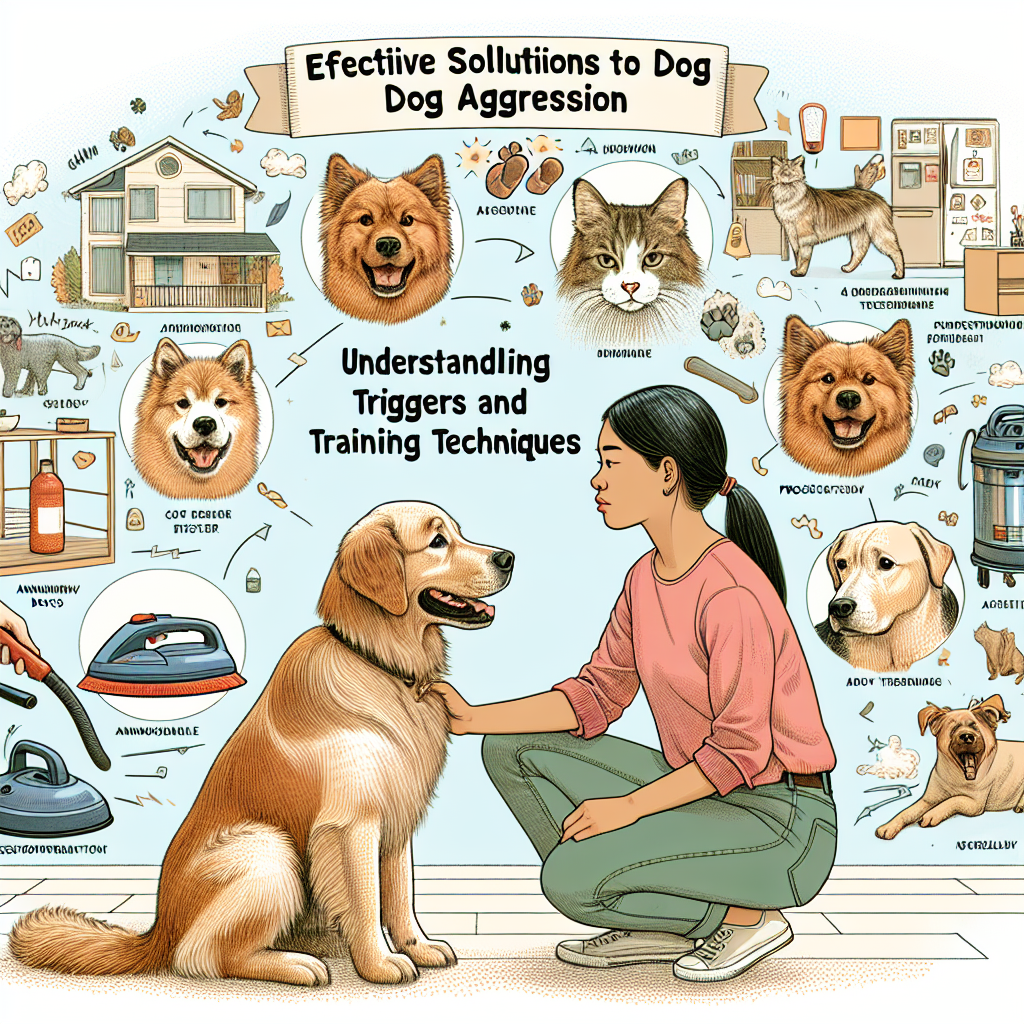Dog aggression can be a serious concern for pet owners, impacting the well-being of your dog and the safety of those around them. Understanding the underlying causes, recognizing the symptoms, and implementing effective training techniques are crucial for managing and mitigating aggressive behavior. In this article, we’ll delve into the triggers of aggression, symptoms to watch for, effective treatment options, and strategies for prevention.
Understanding Aggression in Dogs
Aggression in dogs can stem from a variety of sources. It’s essential to recognize that aggression is often a dog’s way of expressing fear, anxiety, or territorial instinct. Here are some common triggers:
1. Fear-Based Aggression
Dogs that have experienced trauma or lack socialization may react aggressively when they feel threatened. This can include barking, snapping, or even biting when approached by unfamiliar people or animals.
2. Protective Aggression
Some dogs inherently have a protective instinct over their owners or territory. This type of aggression can manifest when someone approaches their home, vehicle, or the people they consider part of their pack.
3. Pain-Induced Aggression
A dog that is in pain may show aggression, especially if someone attempts to touch the painful area. This can happen in older dogs suffering from arthritis or in younger dogs with injuries.
4. Frustration-Induced Aggression
This occurs when a dog is unable to reach something they want, such as a toy or food, leading to aggressive behavior as an outlet for their frustration.
Recognizing Symptoms of Aggression
Recognizing the signs of aggression is crucial for early intervention. Aggressive behavior can vary widely among dogs, but some common symptoms include:
- Growling: A warning sign that a dog is feeling threatened or irritated.
- Snapping: A quick bite, often as a warning before a full bite occurs.
- Barking: Loud, aggressive barking can signal that a dog is uncomfortable or feels the need to protect.
- Baring Teeth: An obvious sign of aggression, showing that a dog is ready to defend itself.
- Body Language: Stiff posture, raised hackles, and a fixed gaze can indicate a dog’s discomfort.
Diagnosing Aggression
If you suspect your dog may be aggressive, consultation with a veterinarian or professional dog trainer is advisable. Here are some steps they may take:
- Behavioral Assessment: A thorough assessment to determine the triggers and patterns of aggression.
- Medical Evaluation: Ruling out any underlying medical issues causing pain or discomfort that might lead to aggressive behavior.
- Reviewing History: Understanding the dog’s background, socialization efforts, and previous experiences can provide insight into their behavior.
Effective Training Techniques for Aggression
Once the triggers and symptoms have been identified, a structured training approach is essential. Here are some effective techniques:
1. Positive Reinforcement Training
Using treats, praise, and rewards to encourage good behavior can shift a dog’s focus from aggression to positive interactions. For example, rewarding your dog for sitting calmly when a stranger approaches can reinforce a positive response.
2. Desensitization
This technique involves gradually exposing your dog to the triggers of their aggression in a controlled environment. Start from a distance where your dog feels safe and gradually decrease that distance while rewarding calm behavior.
3. Counter-Conditioning
This involves changing your dog’s emotional response to a trigger by associating it with something positive. For example, if your dog reacts aggressively to other dogs, provide treats when they see a dog at a distance, gradually moving closer as they remain calm.
4. Obedience Training
Teaching basic commands like “sit,” “stay,” and “leave it” can increase your control over your dog in potentially aggressive situations. Regular training sessions can also strengthen your bond with your dog.
5. Professional Help
Sometimes, professional trainers or animal behaviorists may be necessary to help address aggressive tendencies. Look for those certified in fear-based behavior modification.
Preventing Aggression in Dogs
Prevention is always better than cure. Here are proactive steps every dog owner can take:
1. Early Socialization
Introducing your puppy to various environments, people, and other animals during their critical socialization window (around 3 to 14 weeks) can significantly reduce fear-based aggression later in life.
2. Consistent Training Routine
Establishing a consistent training routine helps your dog understand boundaries and expected behaviors. Regular practice not only reinforces good behavior but also strengthens your bond.
3. Healthy Environment
Creating a safe space for your dog where they can retreat and feel secure reduces anxiety. Ensure they have their own bed or area where they are not disturbed.
4. Understanding Body Language
Educating yourself about canine body language helps you understand what your dog is feeling. This awareness can prevent situations from escalating into aggression.
5. Avoid Punitive Measures
Punishing aggressive behavior can exacerbate the issue. Instead, focus on redirecting their energy through training and positive reinforcement.
Practical Tips for Dog Owners
- Stay Calm: Your dog can sense your emotions. Staying calm can help your dog feel relaxed in stressful situations.
- Use Leashes and Muzzles: If your dog shows signs of aggression, ensure they are leashed during walks and consider using a muzzle in high-stress scenarios.
- Be Patient: Changing aggressive behavior takes time. Consistency and patience are your best allies.
By understanding the triggers of aggression, recognizing the symptoms, and employing effective training techniques, dog owners can create a safer and happier environment for themselves and their pets. Prioritizing the health and well-being of your dog fosters a bond based on trust and understanding, paving the way for enjoyable interactions.





